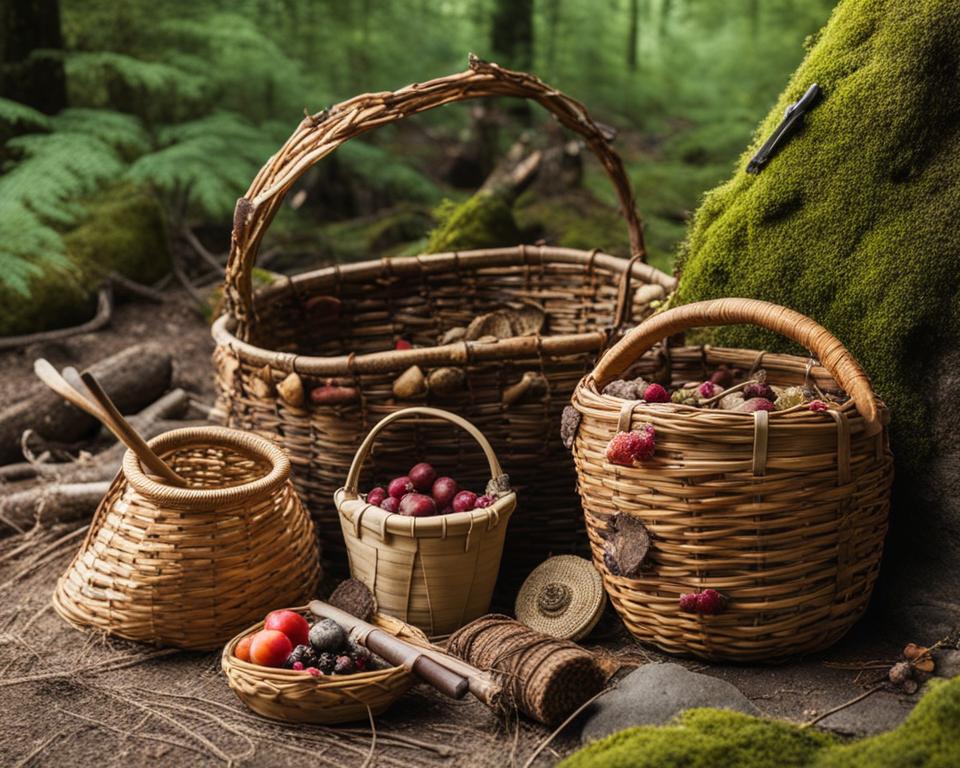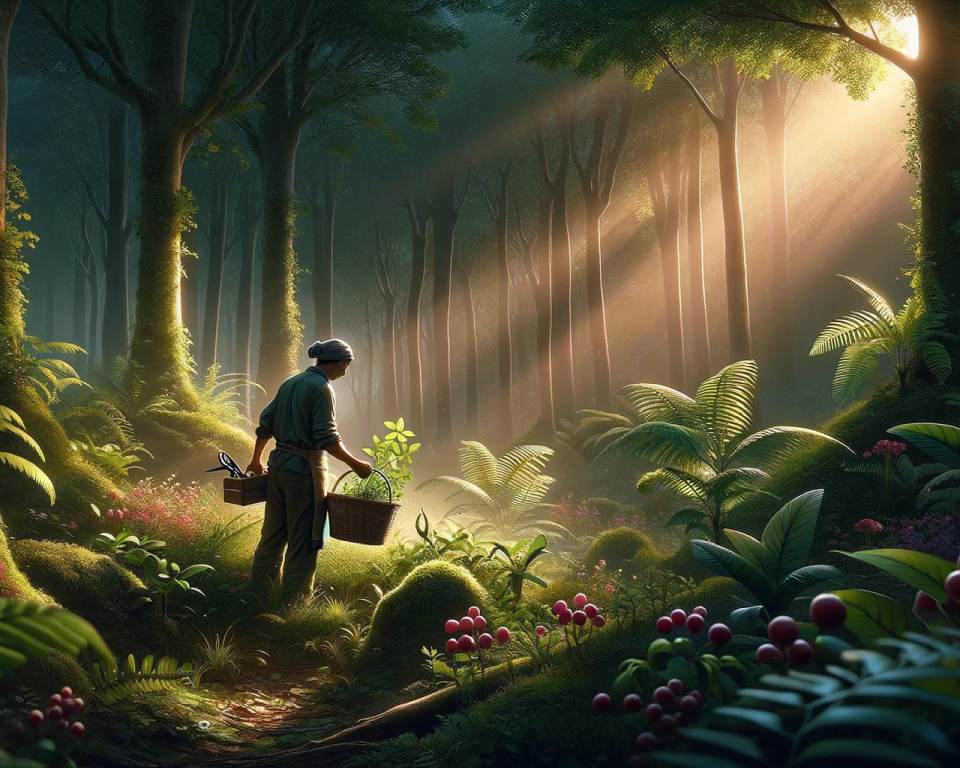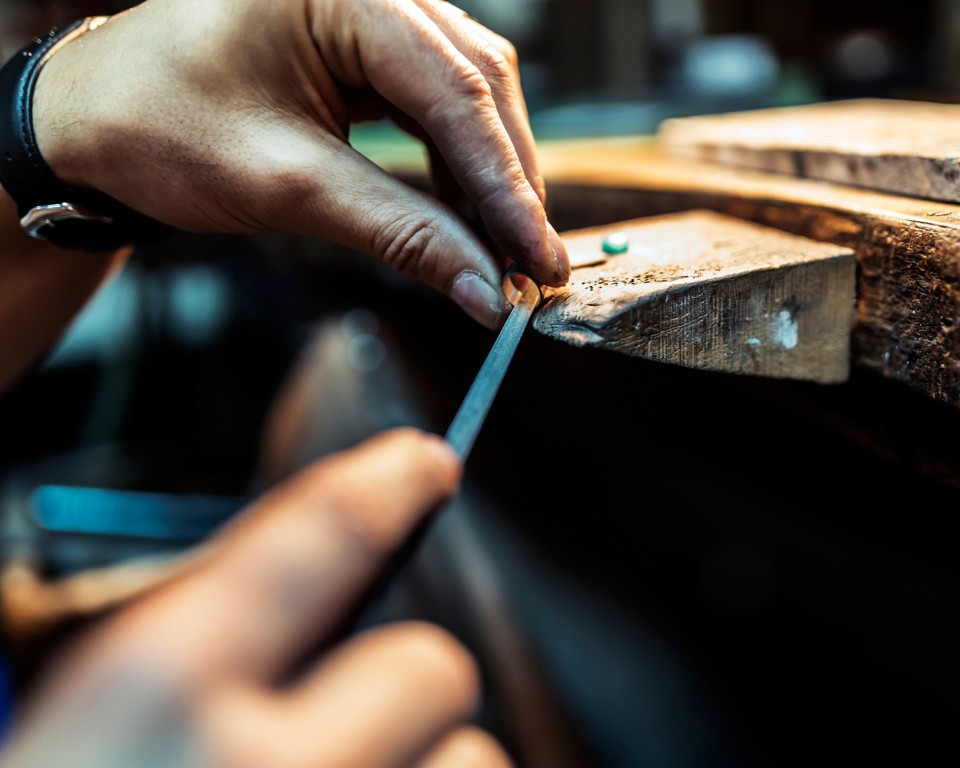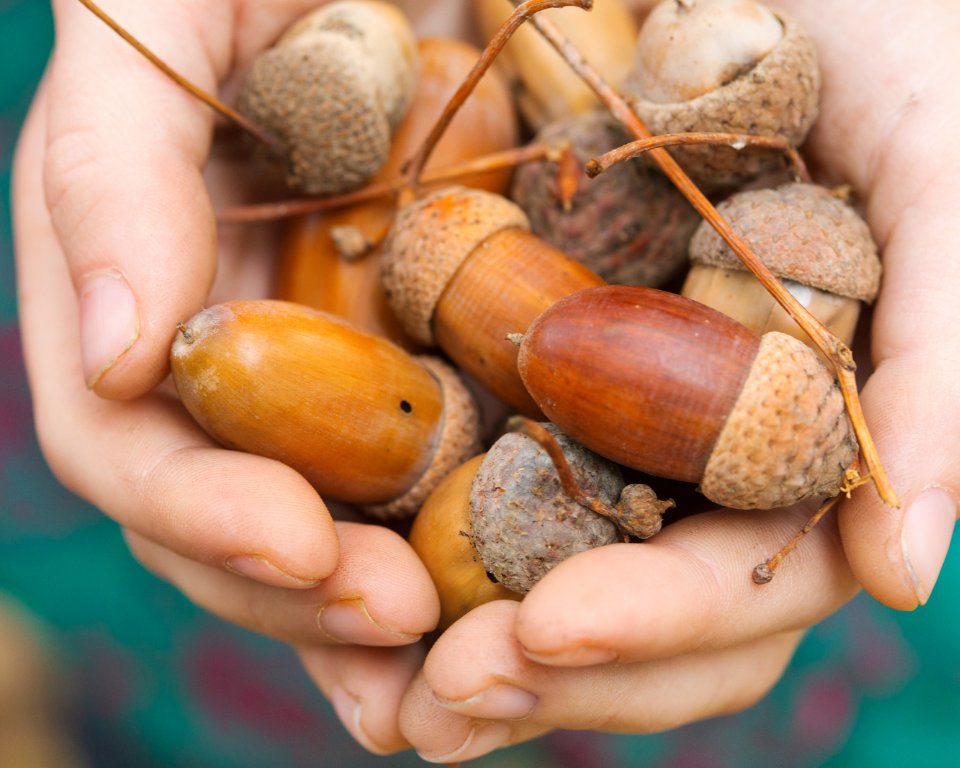Crafting Essential Tools and Gear from Natural Resources
When it comes to survival, having the right tools and gear can make all the difference. In this article, we will explore the art of crafting survival tools from natural resources. Whether you are an avid outdoors enthusiast or a virtual gaming enthusiast, the ability to create DIY survival tools is a valuable skill that can enhance your experience.
From crafting handcrafted survival tools in popular co-op games like Grounded to honing your skills for real-life wilderness survival, we will delve into the world of crafting essential tools from nature’s bounty. Join us as we discover the benefits of DIY survival tools, the satisfaction of creating unique handcrafted gear, and the practical applications of these skills in both virtual and real-life outdoor environments.
Common Natural Resources for Crafting in Grounded
In the popular co-op survival game Grounded, crafting plays a vital role in our journey to survive in the vast backyard wilderness. To create the necessary tools and gear, we must gather common natural resources that are abundant in this virtual world. These resources provide us with the means to build, defend ourselves, and thrive in this challenging environment.
Pebblets
One of the most readily available resources in Grounded is Pebblets. These small pebbles can be found scattered throughout the backyard and are versatile for crafting various items. From basic tools and weapons to more complex projectile weapons, Pebblets are essential in our survival journey.
Plant Fiber
Another common resource we rely on in Grounded is Plant Fiber. This versatile material allows us to craft ropes, bandages, torches, and more. By gathering Plant Fiber, we can create essential items that aid in exploration, healing, and defense.
Sap
Sap is a sticky adhesive that proves invaluable in crafting tools, gear, and even explosive sticky bombs. By collecting Sap from diverse sources in the backyard, we can create essential items that enhance our survival chances and provide tactical advantages.
Clay
Clay is a valuable resource for crafting building materials, cookware, and repair tools. With clay in our hands, we can mold various structures, create essential containers, and even repair our equipment if the need arises.
Acorns
We often stumble upon Acorns in our exploration of the backyard, and these natural treasures can be utilized for crafting protective gear, useful tools, and formidable weapons. By harnessing the power of Acorns, we enhance our chances of survival in this perilous world.
Sprigs
- Tools: Sprigs prove versatile in crafting a wide array of tools that aid in resource gathering and construction projects.
- Furniture: Sprigs can be used to create functional furniture pieces, such as beds and storage containers, that enhance our base-building endeavors.
- Consumables: Sprigs have unique applications in crafting consumables that provide temporary boosts, enabling us to explore and battle with increased efficiency.
In our quest for survival, these common natural resources serve as the building blocks of our journey. By strategically utilizing these resources and honing our crafting skills, we can overcome the challenges that lie ahead and emerge victorious in the world of Grounded.
Rare Uncommon Natural Resources in Grounded
In the vast world of Grounded, players can discover a wide array of natural resources that are crucial for crafting tools, weapons, and equipment. While some resources are abundant and easy to find, others are much rarer and offer unique crafting possibilities. These rare and uncommon natural resources provide players with the opportunity to create powerful items that can greatly enhance their survival.
Spider Fangs
One such rare resource is the Spider Fangs, which can be obtained by defeating the formidable Wolf Spiders. These deadly fangs serve as a valuable material for crafting powerful weapons, durable armor, and consumables. With Spider Fangs in hand, players can gain a significant advantage in combat and improve their chances of survival in the treacherous world of Grounded.
Bombardier Parts
Another rare resource that players can acquire is the Bombardier Parts. These components are obtained from defeating the elusive Bombardier Beetles and can be used to craft advanced items such as formidable weapons and mystical totems. With Bombardier Parts at their disposal, players can unleash devastating attacks on their enemies and further expand their arsenal of tools and weapons.
Eelgrass Strands, Pupa Hides, and Slime Mold Stalks
In addition to the more well-known resources, there are also lesser-known materials with unique crafting applications. Eelgrass Strands, for example, can be found near bodies of water and are used to create special crafting recipes. Pupa Hides, obtained by defeating certain insects, can be utilized for crafting specialized gear. Slime Mold Stalks, rare and elusive, have properties that make them valuable for certain crafting recipes. These uncommon natural resources provide players with additional options for customization and give them an edge in their survival journey.
As players venture through the world of Grounded, these rare and uncommon natural resources become highly sought after. The ability to obtain and utilize these resources in crafting plays a vital role in enhancing one’s survival in the game. The unique and powerful items created from these resources allow players to overcome challenges and conquer the dangers of the backyard world.

Crafting Tools and Gear from Natural Resources – Grounded vs. Real Life
While playing the popular co-op survival game Grounded, we quickly realize the importance of crafting tools and gear from natural resources. But did you know that these skills have real-life applications as well? Crafting tools and gear from natural resources can be a valuable skill to have in real-life outdoor survival situations.
In Grounded, we learn to use abundant and easily accessible resources like Pebblets, Plant Fiber, and Sap to create essential tools, weapons, gear, and health items. These resources mirror the natural materials we can find in the wilderness, such as rocks, plants, and sticky substances.
By applying the principles of using abundant and easily accessible resources to create useful tools in Grounded, we can develop an understanding of how to craft tools in real-life outdoor survival situations.
In both Grounded and real life, the process of crafting tools from natural resources involves resource gathering, material selection, and tool creation. However, in the real world, we have the added challenge of understanding the properties and characteristics of different materials, as well as the physical effort required for crafting.
While Grounded simplifies the crafting process for gameplay purposes, it still teaches us valuable lessons about utilizing natural resources to meet our survival needs. By experimenting with different combinations of materials and crafting methods, we can develop a deeper understanding of how to create functional tools and gear.
As we explore the simulated world of Grounded, we gain insights into the benefits of using tools crafted from natural resources. We learn how these tools can enhance our chances of survival in the game, and this knowledge translates to real-life scenarios as well.
In the real world, we may find ourselves in situations where we need to rely on our resourcefulness and creativity to survive. Whether we’re lost in the wilderness or facing a natural disaster, being able to craft tools and gear from natural resources can make a significant difference in our ability to overcome challenges.
By honing our crafting skills in Grounded, we can better prepare ourselves for real-life outdoor adventures and potentially life-threatening situations.
When it comes to crafting tools and gear in real life, it’s important to remember the principles we’ve learned from Grounded. We should always prioritize using abundant and easily accessible resources, adapt our tools to our specific needs, and constantly innovate new solutions when faced with limited resources.
So, while Grounded may be a fictional game, it offers valuable insights into the art of crafting tools and gear from natural resources. The skills we acquire in this virtual world can have practical applications in real-life outdoor survival, enhancing our ability to navigate and thrive in the great outdoors.
Essential Foraging Tools for Wild Food and Medicine Gathering
When it comes to gathering wild food and medicine, having the right tools is essential. These tools allow us to navigate nature’s bounty safely and efficiently, ensuring a successful foraging experience. Here are some essential foraging tools that every forager should have in their arsenal:
1. Pruning Saws
A pruning saw is a versatile tool that can be used to cut through thick branches and woody stalks. It is especially useful when foraging for fruits, nuts, and edible plants that may require a bit of cutting to access. Look for a saw with a sharp and sturdy blade for efficient cutting.
2. Compact Knives
A compact knife is a must-have tool for any forager. It can be used for a variety of tasks, such as harvesting mushrooms, slicing through tough roots, and preparing harvested food. Opt for a folding knife with a sharp blade and a secure locking mechanism for safety.
3. Garden Scissors
Garden scissors are handy for snipping delicate herbs, gathering wild greens, and harvesting flowers for medicinal purposes. Look for scissors with sharp blades and comfortable handles to make your foraging experience more enjoyable.
4. Hori-Hori Weeding Knives
A Hori-Hori knife, also known as a soil knife, is a versatile tool that can be used for digging, cutting through tough roots, and harvesting tubers. It is especially useful for foraging for wild medicinal plants that may have deep taproots. Choose a knife with a sharp, serrated edge and a sturdy handle for durability.
5. Digging Forks
A digging fork is invaluable when it comes to digging up edible roots, tubers, and bulbs. It allows for efficient excavation without damaging the surrounding plants. Look for a digging fork with sturdy tines and a comfortable handle for ease of use.
6. Kitchen Scissors
Kitchen scissors are a versatile tool that can be used for a variety of foraging tasks, such as trimming edible plants, cutting through thick stems, and portioning harvested food. Choose a pair of scissors with sharp blades and a comfortable grip for precise cutting.
“Having the right tools for foraging is like having a trusted companion in the wild. They enable us to navigate nature’s pantry with confidence and skill.”
These essential foraging tools are just the beginning. Depending on the specific wild foods and medicines you are gathering, you may also need additional tools such as baskets, gloves for protection, and hand lenses for plant identification. Investing in a good set of foraging tools ensures safe and effective foraging, allowing you to make the most of nature’s abundance.
Recommended Brands and Options for Foraging Tools
When it comes to foraging tools, we recommend some top brands that offer high-quality and durable options for your needs. These brands have established themselves as trusted names in the industry, providing reliable tools that will aid you in your foraging adventures. Here are our recommendations:
Felco
Felco is a renowned brand known for its exceptional pruners. Their pruners are designed with precision and durability in mind, making them perfect for cutting branches, stems, and other plant materials during foraging. With ergonomic handles and high-quality steel blades, Felco pruners ensure comfortable and efficient cutting every time.
Hori-Hori
When it comes to weeding knives, Hori-Hori is a brand to consider. Hori-Hori weeding knives are versatile and sturdy, designed for various tasks like digging, cutting weeds, and harvesting. These knives often come with measurements and serrated edges, making them useful for accurate plant identification and precise cutting.
Digging Forks and Compact Knives
For digging and cutting tasks, there are numerous brands that offer reliable options for digging forks and compact knives. Some well-known brands include Fiskars, Corona, and Gerber. These brands provide a range of options suitable for different preferences and needs. Whether you prefer a traditional wooden handle or a modern ergonomic design, you can find a digging fork or compact knife that suits your style.
When choosing foraging tools, consider factors like comfort, durability, and ease of use. Ultimately, the right tools for you will depend on your specific needs and preferences. Invest in high-quality tools that will support you in your foraging expeditions, ensuring a successful and enjoyable experience.
“Having the right tools can make all the difference in your foraging journey. Quality brands like Felco and Hori-Hori provide tools that are built to withstand the demands of foraging and will become invaluable assets in your outdoor adventures.”
So, gear up with the recommended brands and options for foraging tools, and get ready to explore the bountiful world of wild foods and medicinal plants. Happy foraging!
Other Useful Tools and Equipment for Foraging
In addition to the basic foraging tools, there are several other useful items that can significantly enhance your foraging experience.
Baskets for Gathering and Drying Herbs
If you’re planning to gather wild herbs for culinary or medicinal purposes, a sturdy basket is a must-have tool. Baskets with open weaves allow air circulation, ensuring proper drying of herbs while preventing mold or mildew formation. Additionally, they make it easy to carry your harvest without damaging delicate leaves or flowers.

Buckets for Large-Scale Harvests
For times when you stumble upon an abundant yield, having a bucket at hand can be immensely helpful. Whether you’re collecting mushrooms, berries, or nuts, a durable and lightweight bucket provides ample space to gather your harvest efficiently. It’s also easier to pour the contents into larger storage containers once you’re finished.
Gloves for Protection
When venturing into the wilderness, it’s essential to protect your hands from prickly plants, thorns, and potential irritants. Wearing a pair of durable gloves can safeguard your hands from scratches, insect bites, and contact with poisonous plants. Opt for gloves that offer both dexterity and durability, allowing you to handle delicate herbs or prickly berries with ease.
Hand Lenses for Plant Identification
Accurate plant identification is crucial for safe foraging. A hand lens, also known as a magnifying glass, can help you examine the intricate details of leaves, petals, or other distinguishing features. This tool enables you to identify edible plants with precision, avoiding potential mistakes and ensuring a successful foraging expedition.
Sharp Knives for Peeling Bark and Chopping Roots
When gathering materials for natural remedies or using tree bark for various purposes, a sharp knife is an indispensable tool. A sturdy knife allows you to peel bark with precision and efficiency, while also being handy for chopping through tough roots or vines. Look for a durable knife with a reliable locking mechanism to ensure safety during use.
These additional tools and equipment can greatly enhance your foraging endeavors, making the experience more efficient and enjoyable. Remember to choose tools that suit your specific needs and preferences, enabling you to make the most of your foraging adventures.
The Role of Tools in Crafting from Natural Resources
When it comes to crafting from natural resources, tools are essential for gathering, processing, and creating functional items. Pruners, hori-hori knives, and digging forks are invaluable for collecting specific materials such as herbs, roots, and branches. These tools allow us to carefully extract the necessary resources without causing unnecessary damage to the surrounding environment.
Once the materials are gathered, kitchen scissors, pruning saws, and knives play a crucial role in processing and preparing them for crafting. Whether it’s trimming, shaping, or cutting, these tools enable us to transform raw natural resources into usable components for our creations.
“Crafting is a blend of artistry and practicality fueled by the right tools. With the right instruments in hand, we can turn nature’s offerings into beautiful and functional pieces of art.” – Crafting Enthusiast
With the help of these tools, crafters can unleash their creativity and transform ordinary natural resources into aesthetically pleasing and functional items. Whether it’s weaving fibers into baskets, carving wood into intricate designs, or shaping clay into pottery, the possibilities are vast.
To illustrate the importance of tools in the crafting process, let’s consider an example. Imagine we want to create a handwoven basket from plant fibers. By utilizing our tools, we can efficiently gather the fibers, trim them to the desired length, and weave them together to form a sturdy and visually appealing basket. Without the proper tools, this process would be much more challenging and time-consuming.
Benefits of Using the Right Tools
Using the right tools in crafting from natural resources offers numerous benefits:
- Efficiency: The right tools allow us to work more efficiently, saving both time and effort in the crafting process.
- Precision: Tools provide the precision needed to shape and mold materials with accuracy, ensuring the final product meets our artistic vision.
- Durability: High-quality tools are built to withstand the rigors of crafting, ensuring they last for years, enabling us to continue creating.
- Safety: Properly designed tools prioritize our safety, minimizing the risk of accidents and injuries during the crafting process.
So, from the initial gathering of materials to the final product, tools play a vital role in every step of the crafting journey. They empower us to unleash our creativity, transform natural resources into functional pieces, and truly connect with nature.
In the next section, we will explore sustainable foraging practices and how they contribute to the responsible use of natural resources.
Tips for Sustainable Foraging Practices
When it comes to foraging, it’s important to adopt sustainable gathering techniques to protect and preserve our wild resources for future generations. By practicing responsible foraging, we can ensure the longevity of the plants and ecosystems we rely on. Here are some valuable tips to help us forage sustainably:
1. Know Your Plants and Their Growth Patterns
An essential aspect of sustainable foraging is having a deep understanding of the plants we harvest. By familiarizing ourselves with their growth patterns, life cycles, and habitats, we can make informed decisions about which plants to target and when to gather them. This knowledge allows us to avoid accidental harvesting of young or endangered plants, ensuring their survival.
2. Emphasize Seed Dispersal
Seed dispersal is vital for the reproduction and growth of plant populations. To promote sustainable foraging, we should prioritize gathering mature plants and leaving behind a significant portion to disperse their seeds. By respecting the ecological role of seed dispersal, we contribute to the preservation of plant diversity in our surrounding ecosystems.
3. Harvest in Moderation
When engaging in foraging practices, it’s crucial to only collect a small portion of the plant population. Avoid excessive harvesting to prevent the depletion of resources and maintain a healthy population of the species. By taking only what we need, we can ensure the sustainability of the plant community and allow it to replenish itself over time.
4. Use Field Guides for Accurate Plant Identification
Accurate plant identification is essential to avoid mistakenly harvesting endangered or toxic species. Investing in reliable field guides and referring to reputable sources can help us confidently identify the plants we encounter. By being knowledgeable about the plants we forage, we can make responsible choices that positively impact the environment.
5. Follow Ethical Harvesting Practices
Embracing ethical harvesting practices is key to sustainable foraging. This includes respecting private property rights, obtaining necessary permits or permissions for foraging in protected areas, and adhering to local regulations. Additionally, leave-no-trace principles should be followed to minimize our impact on the environment and maintain the natural beauty of the areas we explore.
By adopting these sustainable foraging practices, we can enjoy the bounties of nature while preserving the delicate balance of our ecosystems. Through responsible gathering techniques and a deep respect for the natural world, we contribute to the long-term sustainability of our wild resources.
“Sustainable foraging practices allow us to connect with nature, appreciate its abundance, and ensure that future generations can also enjoy its wonders.”

Crafted Tools and the Art of Survival
Crafting tools from natural resources is an essential skill for outdoor survival. When facing the challenges of the wilderness, the ability to create functional tools and gear can greatly enhance our chances of survival.
By mastering the art of crafting survival tools, we become more self-reliant in remote environments. We gain the knowledge and skills necessary to transform raw materials into practical instruments that meet our specific needs.
Crafted tools empower us to take control of our own survival.
Through the resourcefulness and ingenuity of crafting, we can fashion tools such as spears, bows and arrows, fishing hooks, and traps. These tools enable us to hunt for food, build shelter, create fire, and navigate through unfamiliar terrain.
Crafting tools is not just about survival — it’s an art form that connects us to nature and our primal instincts.
By using our hands to shape the world around us, we tap into our ancestral knowledge and cultivate a sense of connection to the wilderness.
Outdoor survival entails more than just physical strength; it requires the honing of survival skills. Through crafting tools from natural resources, we not only develop practical skills but also foster a deeper understanding and appreciation for the environment.
The Benefits of Crafted Tools in Outdoor Survival
- Self-reliance: Crafted tools allow us to rely less on ready-made equipment and more on our own ingenuity and resourcefulness.
- Sustainability: By utilizing natural resources, we reduce our impact on the environment and promote sustainable practices in outdoor survival.
- Adaptability: Crafted tools can be customized to suit specific needs, ensuring versatility and adaptability in different survival situations.
With crafted tools in our arsenal, we gain the confidence and competence to face the challenges of outdoor survival head-on.
The Importance of DIY Survival Tools
When it comes to outdoor adventures and wilderness challenges, DIY survival tools are an invaluable asset for every outdoor enthusiast. Crafting your own tools not only saves you money, but it also provides the opportunity to customize your gear according to your specific needs. By embracing the art of crafting outdoor tools, individuals can develop valuable DIY skills and experience a sense of empowerment and self-sufficiency.
One of the major advantages of DIY survival tools is the ability to save money. Instead of purchasing expensive pre-made gear, crafting your own tools allows you to use readily available materials and repurpose items you may already have. This cost-effective approach not only reduces expenses but also offers the satisfaction of creating something functional and practical with your own hands.
Another benefit of crafting homemade survival tools is the ability to customize your gear. Every outdoor enthusiast has unique needs and preferences when it comes to their survival tools. By crafting your own, you can tailor the design, features, and functionality to suit your individual requirements. Whether it’s a specific grip on a knife or a personalized carrying system for your equipment, DIY tools offer the flexibility to create gear that works best for you.
Developing valuable DIY skills
Engaging in the process of crafting outdoor tools provides an opportunity to develop essential DIY skills. From woodworking and metalworking to sewing and general construction, DIY survival tool crafting expands your knowledge and capabilities. These skills can be applied not only in the wilderness but also in various other aspects of life, making you more self-reliant and resourceful.
“Crafting your own tools gives you a sense of accomplishment and self-sufficiency. It’s a valuable skill that goes beyond just outdoor survival.”
Furthermore, crafting your own survival tools fosters a sense of empowerment and self-sufficiency. Knowing that you have the capability to create tools that can aid your survival in the wilderness instills a strong sense of confidence. This self-reliant mindset allows you to approach wilderness challenges with a greater sense of preparedness and resilience.
Whether you’re venturing into the deep wilderness or simply exploring your local hiking trails, DIY survival tools are an essential part of every outdoor enthusiast’s gear. From handcrafted knives and fire-starting tools to improvised shelters and water filters, the ability to craft your own survival tools equips you with the resources needed to overcome obstacles and thrive in any outdoor situation.

So why rely solely on store-bought gear when you can tap into your creativity, save money, and develop valuable DIY skills by crafting your own outdoor tools? With homemade survival tools, you are truly prepared for any wilderness challenge that comes your way.
- Save money and customize your gear to your needs.
- Develop valuable DIY skills in survival tool crafting.
- Experience a sense of empowerment and self-sufficiency.
Conclusion: Crafting and Survival Tools in the Great Outdoors
Whether you’re exploring the virtual world of Grounded or embarking on a real-life wilderness adventure, the ability to craft essential tools and gear from natural resources is a valuable skill. By harnessing the power of nature’s bounty, we can equip ourselves with the tools needed to navigate and thrive in the great outdoors.
Crafting survival tools from natural resources offers a sense of self-reliance and empowerment. In the game Grounded, players quickly discover the importance of resources like Pebblets, Plant Fiber, and Acorns for creating tools, gear, and weapons. Similarly, in real-life outdoor survival situations, crafting from natural resources allows us to adapt and overcome challenges.
Whether it’s forging a handcrafted bow and arrow set or fashioning a shelter from branches and foliage, crafting and survival tools enable us to meet the demands of the wilderness. These skills not only enhance our chances of survival but also deepen our connection with nature, fostering a sense of harmony and respect for the natural world around us.
So whether you’re an avid gamer or an outdoor enthusiast, take the time to explore the art of crafting and survival tools. By honing these skills, we can equip ourselves with the knowledge and resources to thrive in both in-game and real-life adventures. The great outdoors await, and with our crafted tools in hand, we are ready to embrace the challenges and wonders that lie ahead.
FAQ
What are some common natural resources used for crafting in Grounded?
Common natural resources used for crafting in Grounded include Pebblets, Plant Fiber, Sap, Clay, Acorns, and Sprigs.
What are some rare and uncommon natural resources used in Grounded crafting?
Rare and uncommon natural resources used in Grounded crafting include Spider Fangs, Bombardier Parts, Eelgrass Strands, Pupa Hides, and Slime Mold Stalks.
How are the principles of crafting tools from natural resources in Grounded applicable to real-life outdoor survival situations?
The principles of using abundant and easily accessible resources to craft tools in Grounded can be applied to real-life outdoor survival situations, allowing individuals to become more self-reliant in wilderness environments.
What are some essential foraging tools for gathering wild food and medicine?
Essential foraging tools include pruning saws, compact knives, garden scissors, hori-hori weeding knives, digging forks, and kitchen scissors.
What are some recommended brands for foraging tools?
Recommended brands for foraging tools include Felco for pruners and Hori-Hori for weeding knives. Various options are available for digging forks and compact knives.
What other tools and equipment are useful for foraging?
Other useful tools and equipment for foraging include baskets for gathering and drying herbs, buckets for large-scale harvests, gloves for protection, hand lenses for plant identification, and sharp knives for peeling bark and chopping roots.
What is the role of tools in crafting from natural resources?
Tools such as pruners, knives, and digging forks are essential for gathering specific materials like herbs, roots, and branches. Kitchen scissors, pruning saws, and knives are used for processing and preparing gathered materials for crafting.
What are some tips for sustainable foraging practices?
Some tips for sustainable foraging practices include having knowledge of plant growth patterns, understanding the importance of seed dispersal, only harvesting a small portion of plant populations, using field guides for accurate plant identification, and following ethical harvesting practices.
How can crafting tools enhance survival skills in outdoor environments?
The art of crafting tools from natural resources can enhance survival skills in outdoor environments by providing individuals with functional and aesthetically pleasing items that can increase their chances of survival in challenging situations.
Why are DIY survival tools important?
DIY survival tools offer several advantages, including saving money, customizing gear to specific needs, developing valuable DIY skills, and providing a sense of empowerment and self-sufficiency in wilderness adventures.
How do crafting and survival tools contribute to the outdoor experience?
Crafting and survival tools crafted from natural resources play a crucial role in navigating and thriving in the great outdoors. They enhance preparedness, self-reliance, and the ability to handle wilderness challenges.








